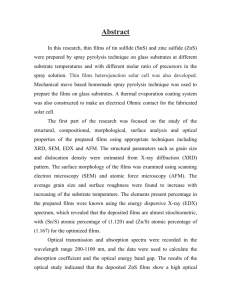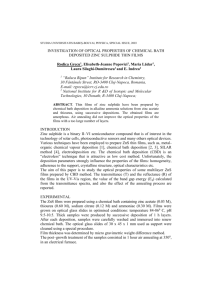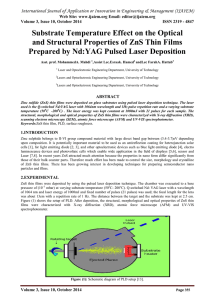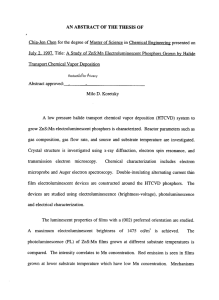Abstract - Journal of Kufa Physics
advertisement
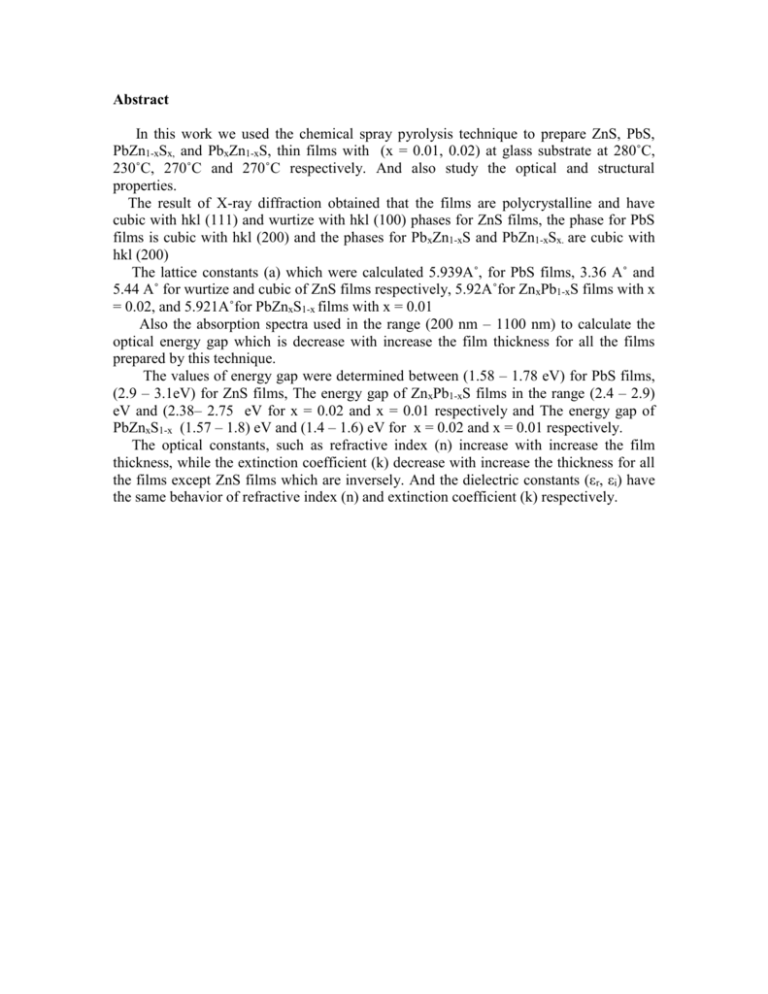
Abstract In this work we used the chemical spray pyrolysis technique to prepare ZnS, PbS, PbZn1-xSx, and PbxZn1-xS, thin films with (x = 0.01, 0.02) at glass substrate at 280˚C, 230˚C, 270˚C and 270˚C respectively. And also study the optical and structural properties. The result of X-ray diffraction obtained that the films are polycrystalline and have cubic with hkl (111) and wurtize with hkl (100) phases for ZnS films, the phase for PbS films is cubic with hkl (200) and the phases for PbxZn1-xS and PbZn1-xSx. are cubic with hkl (200) The lattice constants (a) which were calculated 5.939A˚, for PbS films, 3.36 A˚ and 5.44 A˚ for wurtize and cubic of ZnS films respectively, 5.92A˚for ZnxPb1-xS films with x = 0.02, and 5.921A˚for PbZnxS1-x films with x = 0.01 Also the absorption spectra used in the range (200 nm – 1100 nm) to calculate the optical energy gap which is decrease with increase the film thickness for all the films prepared by this technique. The values of energy gap were determined between (1.58 – 1.78 eV) for PbS films, (2.9 – 3.1eV) for ZnS films, The energy gap of ZnxPb1-xS films in the range (2.4 – 2.9( eV and (2.38– 2.75 eV for x = 0.02 and x = 0.01 respectively and The energy gap of PbZnxS1-x (1.57 – 1.8( eV and (1.4 – 1.6( eV for x = 0.02 and x = 0.01 respectively. The optical constants, such as refractive index (n) increase with increase the film thickness, while the extinction coefficient (k) decrease with increase the thickness for all the films except ZnS films which are inversely. And the dielectric constants (εr, εi) have the same behavior of refractive index (n) and extinction coefficient (k) respectively.




